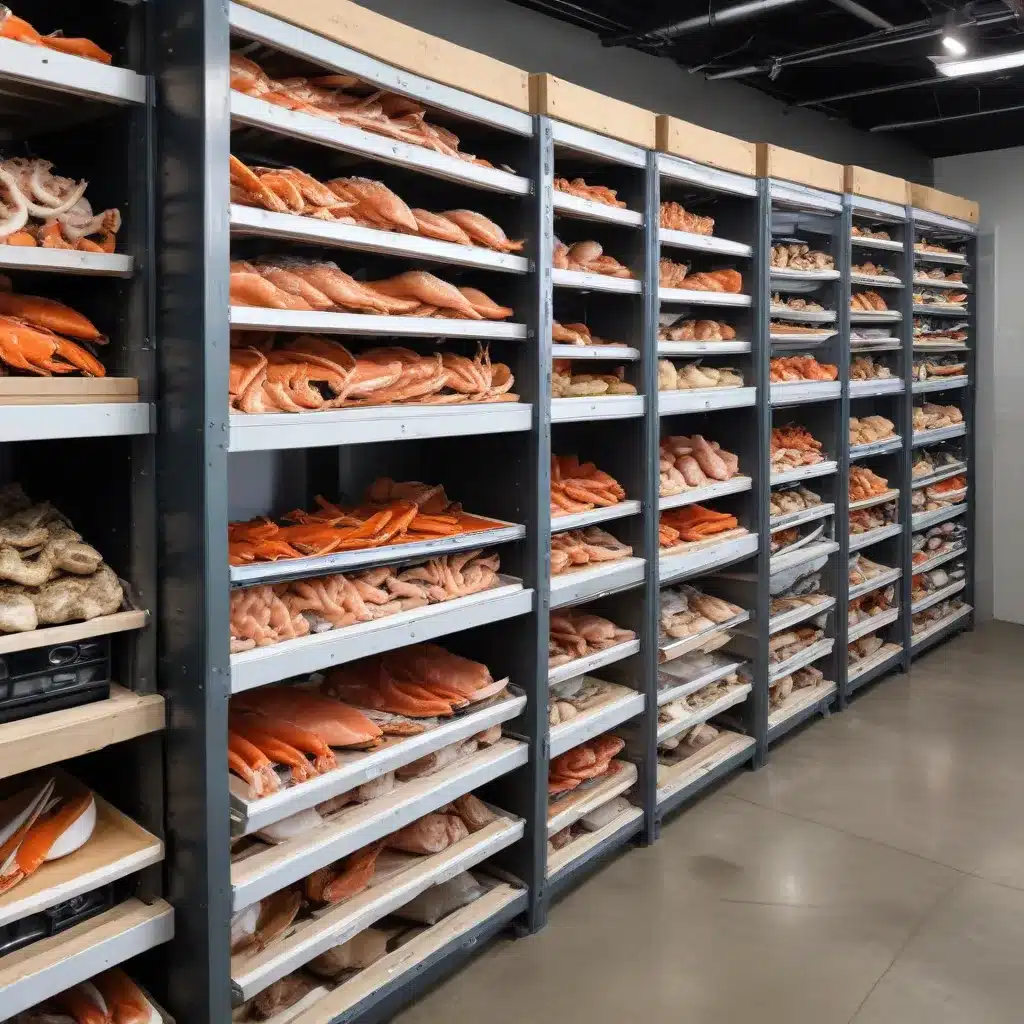
As a seafood dining expert writing for Fish Tales Cafe, I’m thrilled to share my insights on the importance of proper seafood storage. Whether you’re a seasoned home chef or a budding culinary enthusiast, understanding the intricacies of seafood handling and preservation can truly elevate your dining experiences.
Seafood Storage Practices
Refrigeration Techniques
Chilling Seafood Properly: The first step in ensuring your seafood remains fresh and flavorful is to chill it immediately after purchase. Cod and other delicate fish should be stored at a temperature between 32-40°F (0-4°C) to slow the growth of harmful bacteria. Avoid letting seafood sit at room temperature for more than two hours, as this can quickly lead to spoilage.
Maintaining Optimal Temperature: Consistent temperature control is crucial when storing seafood. Invest in a reliable refrigerator or freezer that can maintain the appropriate temperatures. Be mindful of frequently opening the door, as this can cause fluctuations that compromise the seafood’s quality.
Preventing Cross-Contamination: To avoid the risk of cross-contamination, store seafood on the bottom shelf of the refrigerator, below any raw meat or poultry. This prevents juices from dripping onto the seafood and minimizes the spread of harmful bacteria.
Freezing Seafood for Long-Term Storage
Preparing Seafood for Freezing: When freezing seafood, it’s essential to properly prepare the product. Remove any excess moisture by patting the fish or shellfish dry with paper towels. Portion the seafood into manageable sizes or airtight containers to facilitate efficient freezing and thawing.
Freezing Methods and Duration: The best method for freezing seafood is to use a vacuum sealer or heavy-duty freezer bags to remove as much air as possible. This helps prevent freezer burn and preserves the seafood’s texture and flavor. Most seafood can be safely frozen for 3-6 months, though cod fillets may last up to 8 months when stored properly.
Thawing Frozen Seafood Safely: When ready to use your frozen seafood, the safest method for thawing is to transfer it to the refrigerator and allow it to thaw gradually, which can take 12-24 hours. Avoid leaving seafood at room temperature, as this can promote the growth of bacteria.
Seafood Handling Considerations
Purchasing Fresh Seafood
Identifying Quality Indicators: When selecting seafood, look for clear, bright eyes; firm, shiny flesh; and a fresh, briny aroma. Avoid any items that appear discolored, slimy, or have a strong, unpleasant odor, as these are signs of freshness.
Selecting the Right Cuts: Depending on your recipe and cooking method, choose the appropriate cuts of seafood. For example, cod fillets work well for baking or pan-searing, while cod steaks are better suited for grilling or en papillote preparations.
Transporting Seafood Safely: When transporting seafood, keep it cool in an insulated bag or cooler with ice packs. Avoid leaving it in a hot car, as the elevated temperatures can quickly cause spoilage.
Cleaning and Prepping Seafood
Removing Impurities: Thoroughly rinse seafood under cold running water to remove any sand, grit, or other impurities. For fish like cod, be sure to remove any bones or pin bones with kitchen tweezers.
Portioning and Packaging: Portion seafood into individual servings or recipe-ready amounts, and store them in airtight containers or resealable bags. This makes it easy to thaw and cook only what you need, reducing waste.
Preserving Flavors and Textures: When preparing seafood, use techniques like brining or marinating to enhance the natural flavors and keep the flesh moist and tender. Avoid overcooking, which can lead to a dry, rubbery texture.
Environmental Impact of Seafood Storage
Reducing Waste and Spoilage
Proper seafood storage not only preserves quality and flavor but also helps minimize food waste. By following best practices for chilling, freezing, and handling seafood, you can extend its shelf life and reduce the amount of perfectly good food that ends up in the trash.
Sustainable Sourcing Practices
At Fish Tales Cafe, we are committed to supporting sustainable seafood sources. By purchasing from responsible fisheries and suppliers, we can ensure that our seafood is harvested in a manner that protects the long-term health of marine ecosystems.
Minimizing Carbon Footprint
The transportation and storage of seafood can have a significant impact on the environment. By sourcing locally whenever possible and optimizing our refrigeration and freezing methods, we strive to reduce our carbon footprint and contribute to a more sustainable food system.
Exceptional Dining Experiences
Maximizing Seafood Freshness
When seafood is stored and handled with care, its natural flavors and textures shine. By following the best practices outlined in this article, you can ensure that your seafood dishes are consistently fresh, vibrant, and a true delight for the senses.
Enhancing Flavors and Aromas
Properly stored and prepared seafood allows the inherent aromas and flavors to be amplified. Techniques like sous vide cooking or serving seafood with a flavorful mignonette can further elevate the dining experience.
Elevating Culinary Presentations
Finally, the visual appeal of your seafood dishes can truly make them unforgettable. Carefully plating the seafood, perhaps with vibrant garnishes or creative sauces, can transform a meal into a work of art worthy of your guests’ admiration.
By mastering the art of seafood storage and handling, you can unlock a world of exceptional dining experiences at home or in your establishment. Remember, when it comes to seafood, proper care and attention can make all the difference. Visit Fish Tales Cafe to explore more tips and recipes for delicious, sustainable seafood.

